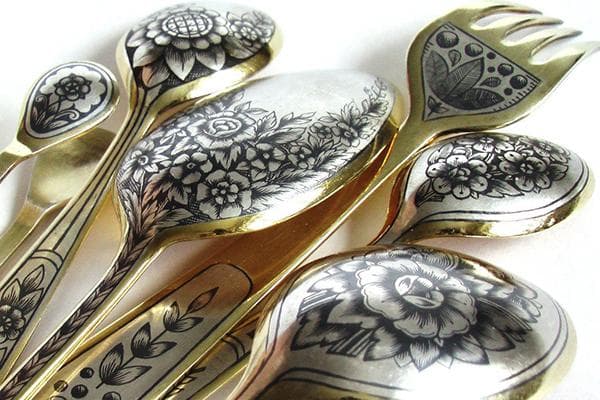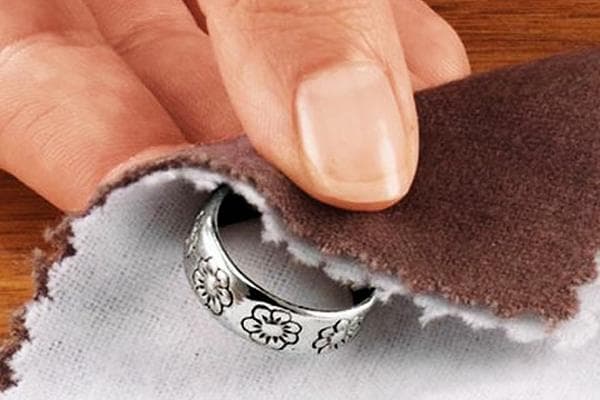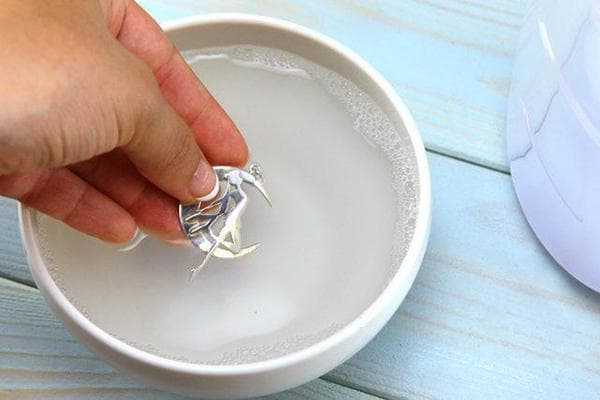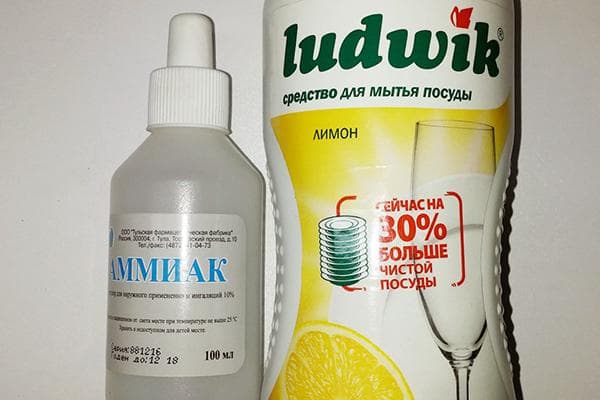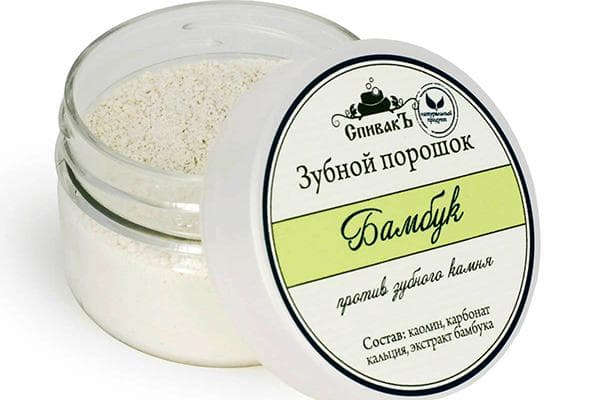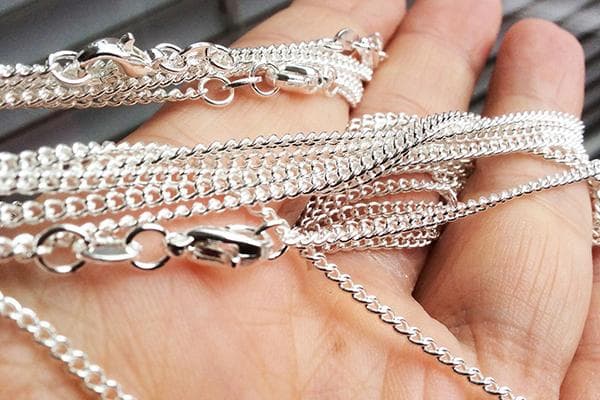How not to spoil silver by trying to clean it with ammonia?
Cleaning silver with ammonia has its pros and cons. On the one hand, the caustic substance allows you to quickly clean products. With it you can easily remove dark spots and dirt in hard-to-reach places. Ammonia will dissolve everything without tedious friction. But there are also disadvantages. It can ruin low-quality products - cause cloudiness and porosity. It cannot be used to clean blackened silver, items with pearls and some other inserts. You also need to handle it carefully so as not to get a chemical burn to the skin and mucous membranes of the nose and eyes.
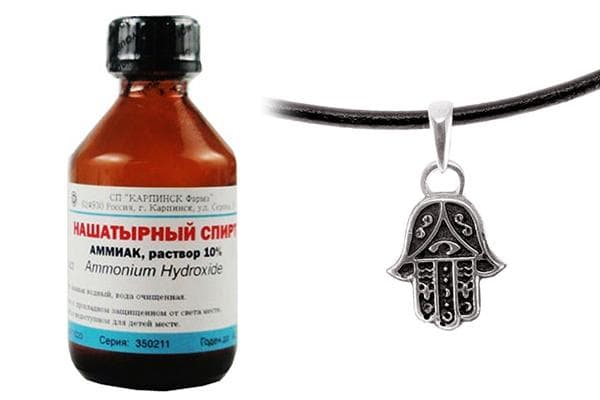
Can silver be cleaned with ammonia?
In the age of technology, using ammonia to clean silver is at least illogical. There are a lot of special tools: HG, Re:Shine, Aladdin and others. They do their job perfectly and are quite inexpensive, considering the volume of the bottle (from 250 rubles for 300 ml).
But if you really want to, you can use ammonia. It is also popularly called ammonia and ammonia. Although it's not exactly the same thing. Ammonia is a gas, and ammonia is an aqueous solution of ammonium hydroxide, or 10% ammonia in water. At this concentration, the ammonia solution is not dangerous for silver. Except for 3 types of products.
Exceptions
Some types of silver items require special care and careful cleaning. Ammonia can damage them.
You cannot clean with a folk remedy:
- blackened silver;
- low-quality silver with a high copper content, products with silver plating;
- jewelry with pearls, amber, coral, ivory.
The remaining stones are not afraid of short-term exposure to ammonia. You can use it to clean products with cubic zirconia, sapphire, emerald, ruby, garnet, topaz and turquoise without fear.
How to clean products correctly?
Blackness on silver is a product of oxidation. Ammonia reacts with oxides and turns them into ammonium salts. It does not dissolve silver, but impurities, which are almost always added to the alloy, can. Ultimately, you may end up with a “dead” piece of jewelry—dull, rough, and discolored. To prevent this from happening, you need to follow 3 rules:
- Note the time. You can't keep silver in ammonia for long. Use a watch.
- Maintain proportions. Do not pour liquid onto your eye. Often, ammonia is diluted with water. Do not increase the dosage and strictly adhere to the recipe.
- Clean gold and silver jewelry separately. If you put them in ammonia together, a chemical reaction may occur that will cause the silver to yellow.
Safety precautions
When working with ammonia, you need to take precautions. A pungent odor is only half the story. Inhaling vapors can cause poisoning. And if handled carelessly, ammonia can cause burns to mucous membranes and irritation to the skin.
7 golden safety rules when working with ammonia:
- Don't try to remove the lid with your mouth!
- Do not lean over ammonia to avoid inhaling fumes.
- Pour the liquid carefully to avoid splashing.
- Use tweezers when removing the product from the ammonia.
- Wear rubber gloves to protect your hands.
- Open all windows while cleaning.The room should be well ventilated.
- If ammonia gets on your mucous membranes, immediately rinse the area with water and consult a doctor.
Step-by-step instruction
To clean silver at home, you will need the following materials:
- ammonia 10% (ammonia for external use and inhalation);
- water;
- utensils not used for drinking and cooking;
- soft cloth (flannel, suede, wool).
Step-by-step instruction:
- Prepare a solution of 1 part ammonia and 10 parts water.
- Place the items in it.
- Waiting time is from 15 to 30 minutes.
- Rub the stained areas with a cloth.
- Rinse under running water and dry.
Soak the silver in ammonia for a short time. It is better to repeat the procedure than to spoil the product.
Folk recipes
Previously, when special compositions for cleaning jewelry were in short supply, people actively used improvised means. Recipes with ammonia were considered the most effective. The pharmaceutical product was used in its pure form and mixed with other solvents for better effect.
With hydrogen peroxide
Peroxide affects the oxidative process with the help of oxygen. Together with ammonia, it actively dissolves plaque on precious jewelry.
Recipe:
- Pour a glass of water into a bowl, add 2 tbsp. spoons of ammonia and hydrogen peroxide, mix.
- Dip the jewelry into the solution and wait 15 minutes.
- After the specified time, arm yourself with a soft cloth, preferably lint-free, and rub the products.
- Rinse with water.
With "Fairy"
Dishwashing detergent acts on the greasy traces left on the product after contact with human skin.Together with ammonia, Fairy and its analogues effectively remove plaque and rid silver of blackness.
Recipe:
- Add 1 teaspoon of Fairy and 2 tbsp to a glass of water. spoons of ammonia.
- Immerse the products in the solution for 20 minutes.
- Remove and rub with a piece of cloth.
- Rinse with water.
With tooth powder
This recipe is suitable for cleaning products with old plaque, but without stones. Tooth powder, like ammonia, can be found at the pharmacy. It acts as an abrasive, removes plaque and polishes the surface.
How to clean silver from plaque at home:
- Mix 5 tbsp in a glass. spoons of water, 1 tbsp. spoon of tooth powder, 2 tbsp. spoons of ammonia.
- Dip a cloth into the solution and clean the items.
- Rinse off any remaining composition with water.
Prevention of darkening
Silver plaques 6 times faster than gold. If gold items need to be cleaned once a year, then silver items need to be cleaned on average every 2 months.
The cause of blackness is impurities. Copper is added to silver for strength. The lower the sample, the more impurities there are in the product and the faster it becomes contaminated. Copper reacts with sulfur from human sweat, and black crystals appear on the surface of the jewelry - silver sulfide. Sulfur may also be present in the air.
To keep your silver items shiny and clean longer, take the following steps:
- Choose a dry and dark place for storage.
- Wrap the items in a soft cloth so that they do not touch each other.
- Remove jewelry when bathing, cleaning, or applying cosmetics.
- Don't leave silver wet. Wipe up spills immediately.
It is believed that silver jewelry darkens faster on people who have problems with stomach acidity.
Silver is a noble metal. He is credited with healing and mystical properties. Many people love silver jewelry much more than gold. But in order for them to serve for a long time, it is necessary to follow the rules of care. Ammonia is an effective home remedy for black on silver. However, its use is associated with a certain risk. Therefore, when choosing ammonia for cleaning, you need to study the list of “contraindications” and strictly follow the instructions.
